Today, the buyer has access to a mass of a wide variety of gadgets, most of which are so versatile and high-tech that they can replace several devices at once. One of these devices is “smart” TV, the demand for which is growing every year, and therefore the editors of the site “bestx.htgetrid.com/en/” have prepared for you an overview of the best TVs equipped with the Smart TV platform.
Content
History - how it all began
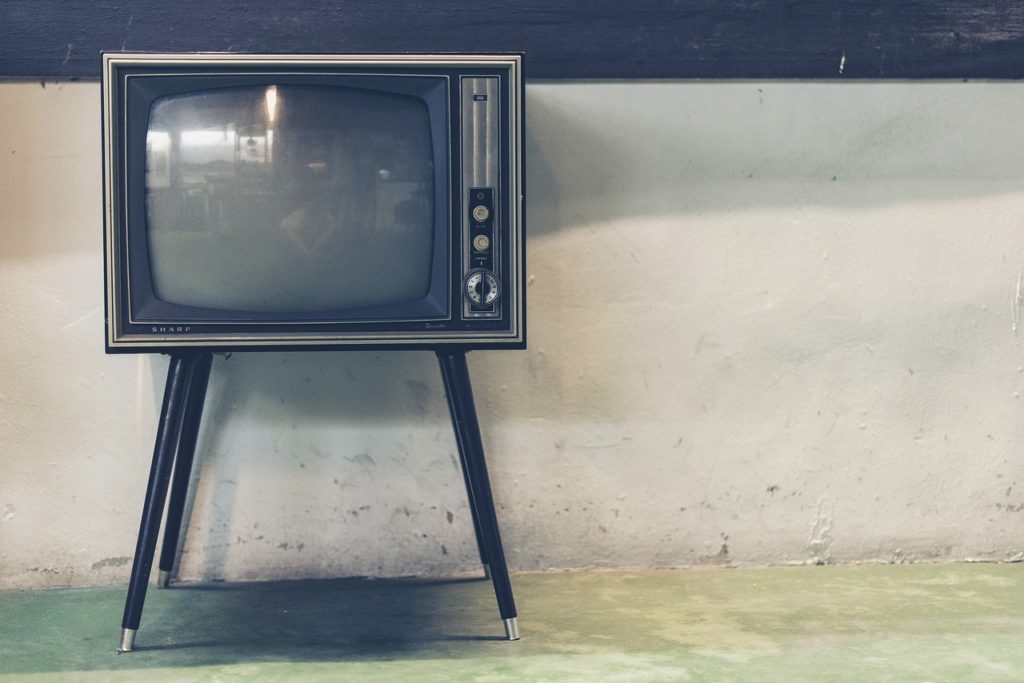
The era of “smart TVs” started more than twenty years ago, when the famous Microsoft company developed the MSN TV device. It connected to the TV and made it possible to access the Internet to search for the necessary information. The idea was not bad, but it did not become widespread due to the fact that traditional TV did not have sufficient power and data transfer speed.
By the beginning of the 2000s, set-top boxes appeared on the electronics market - small Set Top Boxes, which were connected to the TV and expanded the capabilities of technology.
But the real breakthrough happened in 2009, when DLNA technology was introduced to the world, which contributed to the integration of the operating system into the television receiver.
Smart TV - what is special
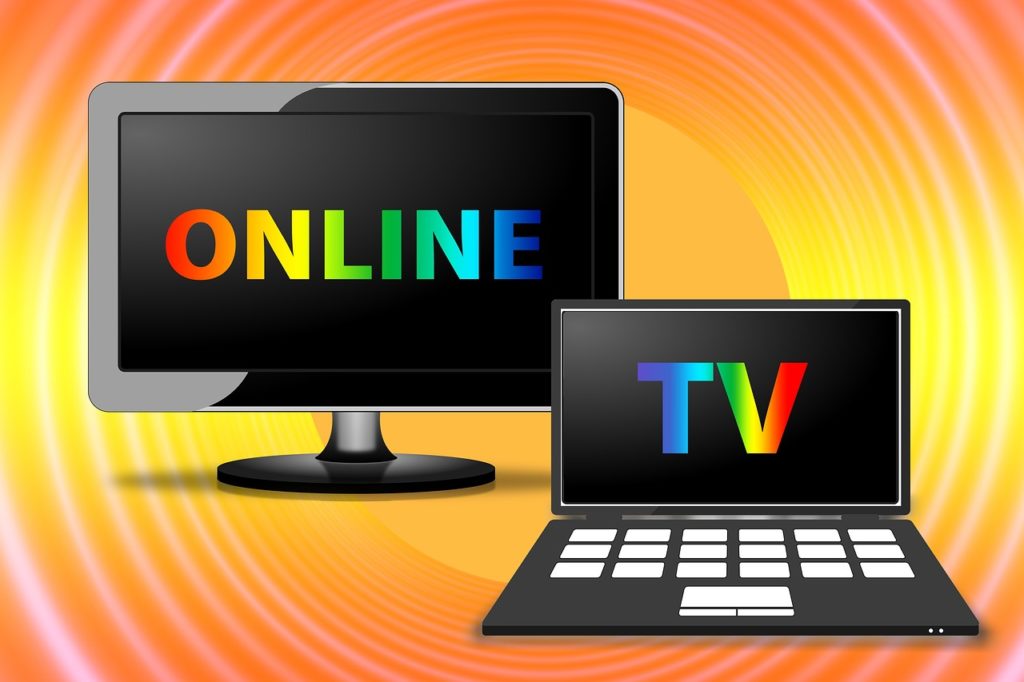
Smart TV is a technology that transforms familiar technology into a multifunctional device similar to a smartphone. However, there is still something that a smartphone does not have - a large screen, surround sound and a colorful picture.
Smart TV not only broadcasts TV channels, but also has a whole range of other features, such as:
- Internet access (via Wi-Fi or using a network cable connected to the LAN port);
- Watching videos on YouTube;
- Communication on social networks;
- Use of online cinemas;
- Surfing the web using the built-in browser;
- Making purchases in online stores;
- Launching games.
Thus, the technology with Smart TV is a symbiosis of a television receiver, a computer and a game panel.
Next, we will consider what are the criteria for choosing a TV with Smart TV technology in order to understand how to choose the right model.
Main selection criteria
Housing
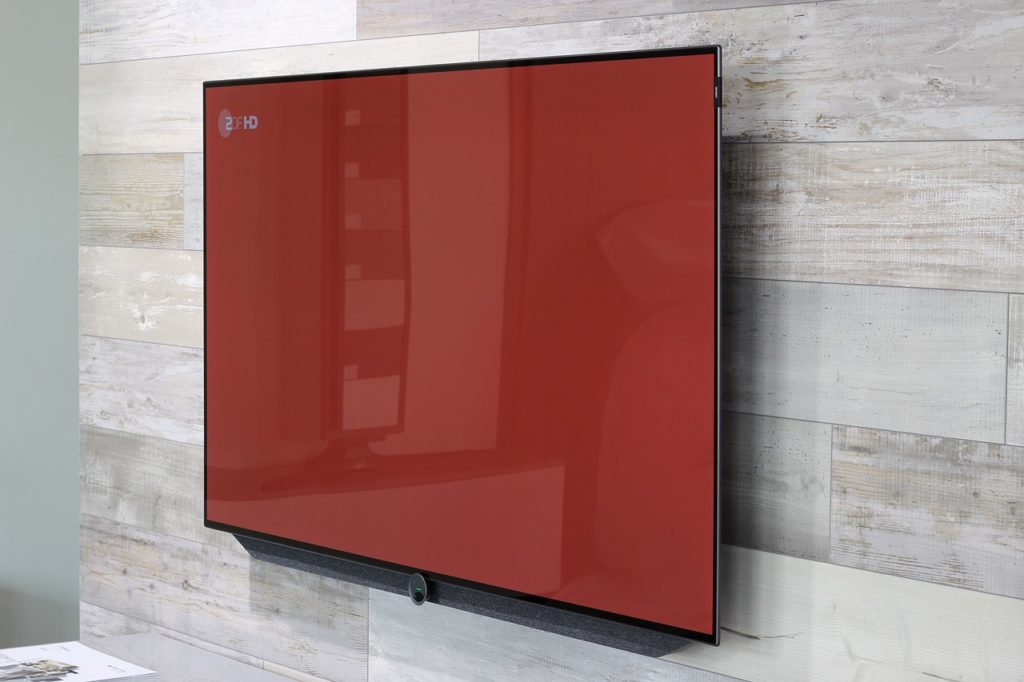
Most of the modern TV models look quite similar, but it's not that simple.
The bezels around the perimeter of the screen come in different widths and styles. This must be taken into account especially in cases where it is important to "fit" a new technique into the overall design of a house or apartment. There is also frameless technology.
Build quality is also of paramount importance - insufficiently rigid structural connections will cause streaks on the screen if mounted on a wall.
There are devices on the market with a waterproof case, so that the equipment can be operated in rooms with high levels of humidity, for example, in a pool or bathroom.
Smart TV platform

The platform for Smart-TV is various operating systems. The nicest ones are:
- Android is a system based on the Linux kernel, promoted by Google, and therefore the applications needed to install are easy to find on Google Play;
- Android TV - differs from the first system in modernized functionality designed specifically for TV;
- Tizen is also a Linux-based operating system that Intel and Samsung have contributed to. Applications are available for download through the built-in store;
- webOs is a system installed on LG brand models. Also has a built-in app store.
Format
Aspect refers to the aspect ratio of the TV screen.
Traditional models have a ratio of 4: 3. A widescreen TV is characterized by a width-to-height ratio of 16: 9, 16:10 or 21: 9. Today, widescreen TVs are the majority of HD models, and in terms of their parameters they are close to cinema screens.
Diagonal
The diagonal of modern television technology is traditionally measured in inches, while 1 inch = 2.54 cm. Diagonal refers to the size of the screen, which is usually chosen based on the minimum distance between the viewer and the device. In accordance with the average recommendations, approximate calculations were made. So, if this figure is one and a half meters, then a model with a diagonal of 32 inches is recommended, two meters - 42 inches, two and a half meters - 50 inches, and for three meters it is best to choose a 60-inch device.
Color rendering method
Types of modern TVs:
- LED screens - their work is based on a liquid crystal matrix;
- OLED monitors - they use a matrix made of organic compounds and composed of diodes of three primary colors;
- Plasma panels - they function by means of a sensor, which is a set of cells covered with a phosphor, filled with an inert gas.
Matrix
The matrix is the main element of the TV, since the image quality, its clarity, detail, brightness and contrast depend on it. Currently, there are several types of matrices used in LCD models.
TN is the most common type of matrix. The advantages of TN are low cost and excellent speed. The disadvantages are a small viewing angle and low contrast.
IPS - are less widespread than TN. Among the advantages should be noted a wide viewing angle, excellent reproduction of dark shades and good contrast. Among the disadvantages is the high price.
* VA is a type that is considered a compromise solution between TN and IPS. The viewing angle of such matrices reaches 1800, and the speed of response to commands is only slightly inferior to TN matrices, but at the same time they create a deep black color and accurately reproduce shades.
Resolution

Resolution refers to the number and size of pixels per unit of image area. And the higher this indicator, the better and clearer the picture will be displayed.
The standard resolution is 800x600 pixels, which budget TVs have. But the majority of modern models have a resolution - 1920 × 1080 (Full HD) or 1280 × 720 (HD Ready), which is characterized as high. In the 1080p format, most of the modern films are recorded on Blue-Ray and it is suitable for game consoles, however, on small screens (32 inches), both Full HD and HD Ready will transmit the same image.
There is an ultra-high resolution 3840x2160 (UHD 4K), which provides the highest possible clarity, but there is very little content recorded in this format and the cost is very high.
Contrast
Contrast refers to the ratio of maximum and minimum screen brightness, and determines how well the technique is capable of reproducing tones and midtones. The higher the value, the better the TV will reproduce darkened video.
There is also dynamic contrast, which determines the ratio of the brightness of a light picture on the screen to the brightness of a dark picture.
Brightness
The brightness parameter is important when the device is installed in a room with intense lighting, since in this case, at low brightness values, the screen will be exposed.
The light sensor (or ECO sensor) is used to determine the degree of brightness in the room where the TV is operating. With the help of this mechanism, the brightness changes depending on the level of illumination, which contributes not only to a more comfortable viewing, but also to a decrease in power consumption, because in the dark, the brightness is automatically reduced.
Supported interfaces
- HDR is a standard that provides transmission of images in a high dynamic range of brightness. Devices equipped with HDR render whites brighter and darker ones more saturated. To realize the full potential of HDR, video must also have an extended brightness range;
- Bluetooth is a wireless file transfer technology, the feature and main drawback of which is its short range. Using Bluetooth, the TV can be connected to various devices equipped with the same interface - wireless keyboard, mouse, headset, etc .;
- Wi-Fi - built-in Wi-Fi module provides wireless connection for Internet access;
- Miracast - Wireless transmission of video and audio signals between TV and smartphone. You do not need a Wi-Fi router to connect, because the connection is carried out directly via Wi-Fi Direct;
- DisplayPort - used to transfer digitized video and audio signals protected from illegal copying (DPCP);
- RS-232 - allows you to remotely interact with Smart-TV and control its operation;
- USB - The USB slot is used to connect an external storage device or hard drive to the device.
Refresh rate index
Refresh rate refers to the rate at which a frame is reconstructed and is measured in Hz. In conventional models, the index is 50 Hz per second, that is, the frame is updated fifty times.
Good LCD TVs have a frequency of one hundred Hz, so there is no blur or jagged movement when showing action scenes. Therefore, the higher this value, the better the image quality.
Connectors
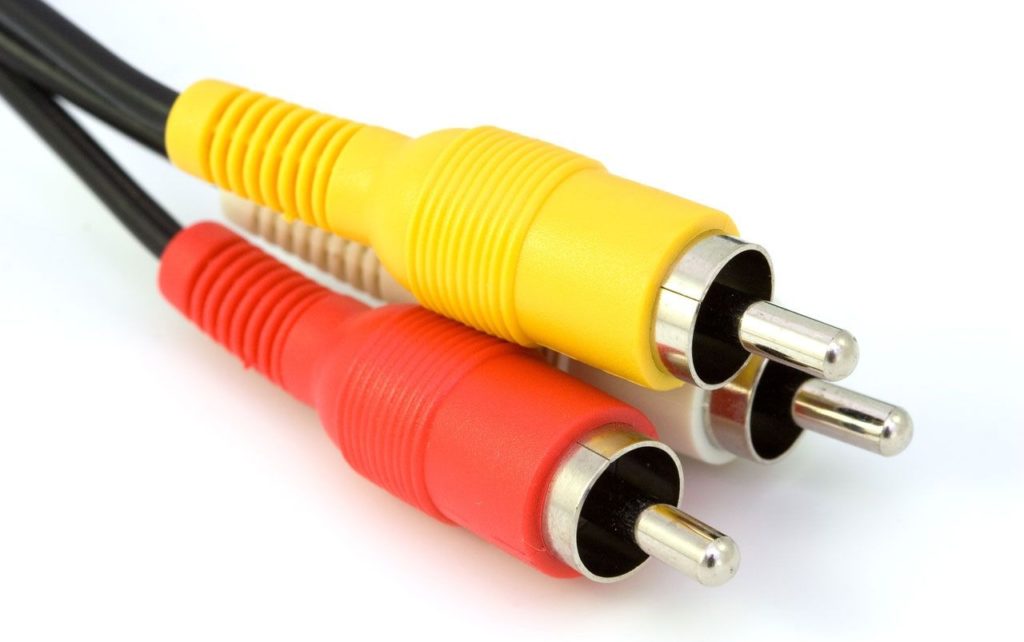
Modern models are equipped with the following inputs and outputs.
Inputs:
- AV - used to connect an external media for video content to a TV device;
- HDMI - required to transmit video signal, as well as multichannel audio in digital form;
- S-Video / VGA - transmits analog video signal.
Outputs:
- Audio optical - transmits a digitized audio signal in multichannel or stereo mode;
- Headphone out - Used to connect headphones or a headset. The most common standard is mini jack 3.5 mm.
3D technology
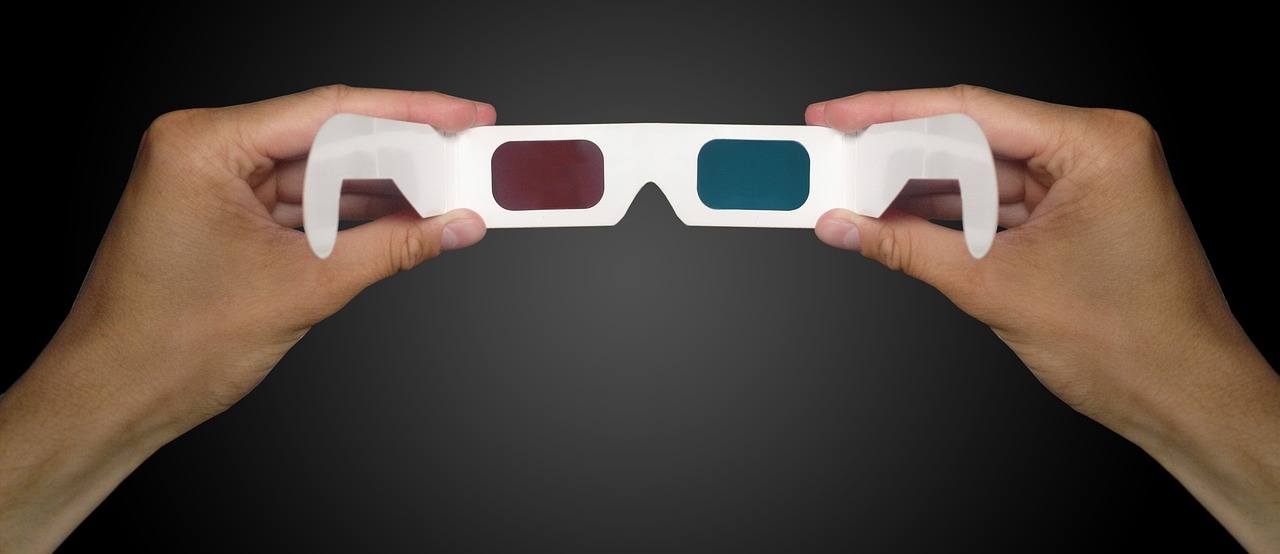
The 3D format in TVs is used to simulate the third dimension and create the effect of spatial depth. Technology can be shutter and polarizing.
The shutter requires the use of glasses that alternately cover one or the other eye.
Polarizing, also called passive, uses glasses that transmit images with different types of polarization to the right and left eyes.
There are also models on the market that are capable of transmitting a three-dimensional picture without glasses.
Some Smart TVs have a 2D to 3D conversion function. The principle of operation is as follows - the main objects are isolated from the flat image, based on the physical parameters of which the estimated distance to the viewer is calculated. Next, two pictures are built (separately for the left eye and separately for the right), which are then projected onto the display.
Advantages and disadvantages
Advantages:
- Smart TV can be used as an alternative to a computer;
- The functionality of the device allows you to download, install and work with various applications and services;
- Many Smart-TV models are preinstalled with online cinemas;
- Great for playing video games, as it has high-quality graphics and a large screen;
- The live broadcast recording function will allow you to record any series, match or movie to an external or internal drive, for viewing at a convenient time for you;
- Using the built-in browser, it is easy to search for the necessary information on the Web and visit social networks;
- Having installed a webcam, you can communicate via video communication and arrange video conferences;
- According to buyers, it is also important to be able to connect external media to the TV and view information on a large screen, such as photos.
Disadvantages:
- High cost, but every year Smart-TV is becoming more affordable;
- Reviews indicate that when playing movies with the mkv or avi. there may be problems with sound and / or picture;
- Some models have very inconvenient control menus.
Which company is better
The best manufacturers of mid-range and premium models:
- Samsung;
- Sony;
- LG;
- PHILIPS;
- Panasonic;
- Xiaomi.
Popular inexpensive models are produced by Thomson, BBK, Supra, Mystery, Telefunken, Harper, Erisson, JVK, TCL.
Selection errors
In order to understand which TV is better to buy, you should pay attention to the following parameters:
- LED backlighting - LED backlighting is used in modern TVs to replace the standard cold cathode fluorescent lamps that are used in classic appliances. LED backlighting, in comparison with fluorescent lighting, wins in many respects - it has more compact dimensions, longer service life, consumes less electricity and emits softer light;
- Local Dimming is a local dimming technology that allows you to change the degree of backlighting in certain areas of the screen. Local Dimming improves the quality of the displayed picture by producing true blacks in the dark areas without affecting the brightness in the illuminated areas. Local Dimming is typically used in Direct LED backlit devices. Local dimming is also encountered in Edge LED backlit technology, but in this case the technology is less effective;
- NanoCell - a technique, the functionality of which is improved by NanoCell technology, characterized by high-quality color reproduction and a wider viewing angle;
- Timer - allows you to program the TV to turn off after a certain period of time;
- DVD-player - built-in DVD player. The main advantage of the DVD-player is its compactness, which allows you to save space and not mess around with wires;
- Gesture control is a function that allows you to control the device by playing certain gestures in front of the screen instead of pressing buttons on the remote.
Main technical characteristics
| room | Specifications | Recommendations |
|---|---|---|
| 1 | Body material | High-strength plastic is used for the manufacture of the case. Individual parts can be made of metal, which increases the strength of the structure. |
| 2 | Scan | There are two types - interlaced and progressive. When interlaced, the frame is drawn by first outputting all odd lines, and then even ones. With progressive, lines are output one after another, that is, in order. |
| 3 | Pixel response speed | The lower the response speed, the better the quality of the dynamic frames will be reproduced. If the pixel response time is high, then in scenes with fast moving objects, a noticeable trail may occur. |
| 4 | Viewing angle | In liquid crystal televisions, when looking at the screen from the side, the image quality is prone to deterioration, and therefore the viewing angle should be at least 10: 1 or 170 degrees. At this value, the contrast does not decrease, and the picture is not distorted. |
| 5 | Refresh rate index | In high-quality models, the frame refresh rate is as close as possible to 100 Hz. |
| 6 | How much is | At the price of "smart" devices differ depending on the technical capabilities. An inexpensive model costs about 19,000 rubles. A multifunctional device will cost an average of 48,000 rubles. |
Rating of quality models for 2020
Thomson T32-RTL-5140
Manufacturer: Russia
Diagonal: 31.5 inches
Screen resolution: HD (720p)
Frame refresh rate: 50 Hz
Dimensions: 73x43.6x8 cm (excluding stand size)
The average price is 11,000 rubles.

Inexpensive Smart-TV in a simple design. It has a loud sound, a clear picture and is perfect for the kitchen or dining room, as well as for non-techies. Easily and quickly "catches" Wi-Fi, and its management is intuitively simple. Over a thousand channels available. The viewing angle is 1780, response time - 6.5 ms. There is a progressive distribution. The speaker system for two surround sounding speakers has a power of 10 watts. Two HDMI and two USB outputs are available. The device can be hung on the wall.
Advantages:
- solid assembly;
- remote control with direct YouTube connection;
- LED backlight (Direct LED);
- with stereo sound (NICAM support);
- with teletext;
- with automatic volume leveling;
- with sleep timer and child protection;
- with Wi-Fi module.
Disadvantages:
- long turn on;
- inconvenient location of connectors (center back);
- low-power;
- no operating system information.
Panasonic TX32-FSR-500
Manufacturer: Japan
Diagonal: 31.5 inches
Screen resolution: HD, HDR (1080p)
Frame refresh rate: 50 Hz
Dimensions: 73.3x43.7x6.9 cm (excluding the stand)
The average price is 17,000 rubles.

Multifunctional and ultramodern model with Smart-TV, which appeared on the market a year ago. The settings for this TV are very easy to figure out, and thanks to the sleek and elegant design, it will fit into almost any interior. There is a progressive layout. Music lovers will appreciate the 20 W speaker system with surround sound from two speakers. There are HDMI (2) and USB (2) inputs, you can also connect headphones or a stereo headset. You can record TV programs or videos you like on an external USB drive or hard drive. If desired, the TV can be easily hung on the wall.
Advantages:
- with HDR10 format;
- backlit by LEDs;
- with stereo sound;
- supports DVB-T2, DVB-S and DVB-S2;
- with teletext;
- has a Wi-Fi module;
- with TimeShift function.
Disadvantages:
- does not support 3D;
- no bluetooth;
- the description does not contain information about the operating system.
Samsung V32-F390-SIX
Manufacturer: South Korea
Diagonal: 31.5 inches
Screen resolution: Full HD (1080p)
Operating System: Tizen
Frame refresh rate: 50 Hz
Dimensions: 72.4x42.8x10 cm (excluding the stand)
The average price is 18,000 rubles.
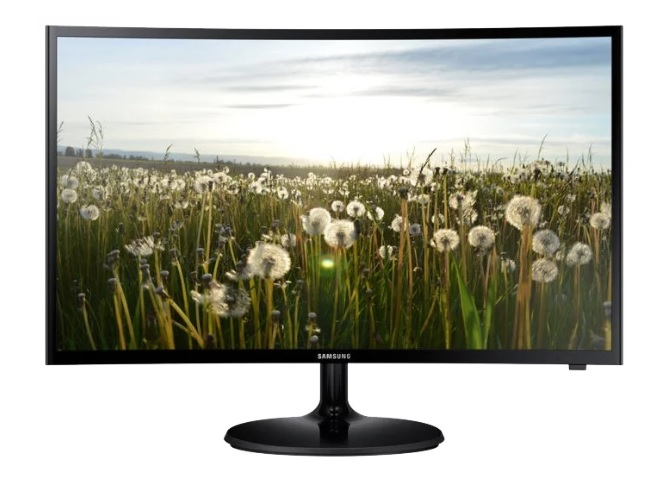
A 2018 model of LCD TV with Smart TV, ideal for small spaces. It conveys a bright and rich picture, high-quality and clear sound is broadcast from the speakers, and even the most inveterate game lovers will appreciate the functionality. The viewing angle is 1780, the pixel response time is 21 ms. There is a progressive scan. The TV is equipped with two surround speakers with a total output of 10 watts. There are HDMI and USB connectors, as well as a headphone output.
Advantages:
- excellent value for money;
- with LED backlight;
- stereo sound;
- curved screen;
- supports DVB-T2, that is, digital broadcasting standard;
- there is a teletext function;
- built-in WI-Fi module;
- with a sleep timer;
- with protection from children.
Disadvantages:
- unstable stand.
HARPER 50U-750-TS
Manufacturer: Russia
Diagonal: 49.5 inches
Screen resolution: 4K UHD (2160p)
Operating system: Android TV
Frame refresh rate: 50 Hz
Dimensions: 112.6x71.3x26.1 cm (excluding stand size)
The average price is 23,000 rubles.
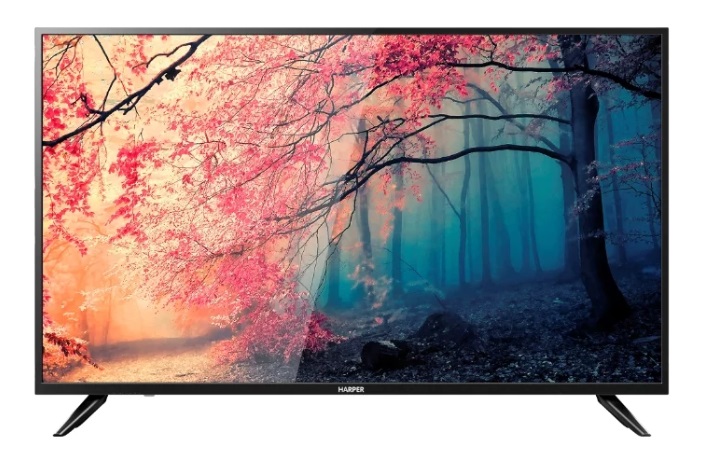
Budget LCD TV with Smart-TV platform and 178 viewing angle0 - will be a good option for a bedroom or living room. Fast Pixel Response - 6.5ms. There is a progressive layout. Acoustic system with a power of 16 watts. The video is recorded to an external USB storage device. There are mounts for wall mounting. The device is equipped with 3 HDMI inputs, two USB and a Miracast port. The output is optical.
Advantages:
- good build quality;
- LED backlight;
- supports NICAM stereo sound;
- there is teletext;
- with Wi-Fi module;
- with support for 24p True Cinema;
- with support for DVB-T2;
- with the TimeShift function;
- with sleep timer and protection against accidental activation;
- affordable price.
Disadvantages:
- poor quality remote control;
- inconvenient stand;
- small performance.
LG 43LK-5910
Manufacturer: South Korea
Diagonal: 42.5 inches
Screen resolution: Full HD, HDR (1080p)
Operating System: webOS
Frame refresh rate: 50 Hz
Dimensions: 97.7x61.5x18.7 cm
The average price is 24,000 rubles.
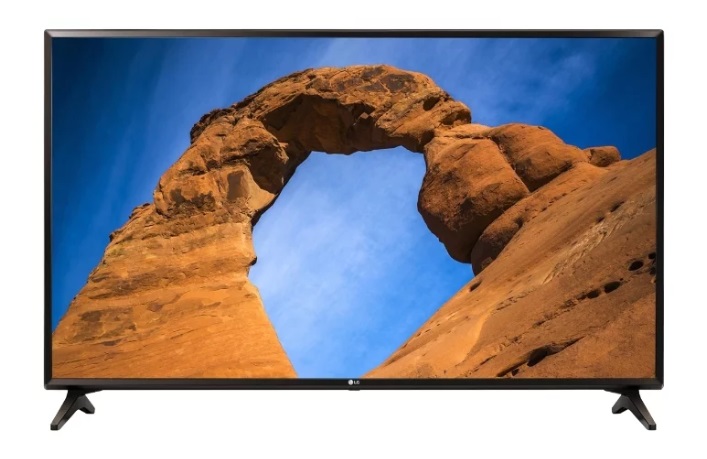
High-tech LCD TV with fast Smart-TV, excellent sound and picture. Dynamic Color technology contributes to rich color reproduction for extremely realistic on-screen images.
There is a progressive distribution. Sound system for two speakers with surround sound effect has a sound power of 10 watts. There are two HDMI and USB inputs. There is also a headphone jack.
Advantages:
- with high dynamic range;
- with LED backlight (Direct LED);
- with stereo sound;
- with support for DVB-T2, DVB-S and DVB-S2;
- with automatic volume leveling function;
- there is a modular Wi-Fi;
- with a sleep timer;
- with protection from children;
- affordable cost.
Disadvantages:
- wide legs of the stand;
- there is no voice control;
- no bluetooth.
Sony KD43-XF7005
Manufacturer: Japan
Diagonal: 42.5 inches
Screen resolution: UHD, HDR 4K (2160p)
Frame refresh rate: 50 Hz
Dimensions: 97x57.1x5.8 cm (excluding stand dimensions)
The average price is 40,000 rubles.

Full format LCD Smart TV with 178 viewing angles0... High-quality image, rich colors, excellent contrast, quick and simple menu - all this is in this 2018 model from the world famous manufacturer.
The speaker system for two speakers functions with a surround sound effect. There is a progressive scan, Miracast input, as well as AV, HDMI (3), USB (3) and headphone jacks. The video is recorded on an external USB drive, as well as on an internal 4 GB disk. If desired, the device can be mounted on a stand or mounted on a wall.
Advantages:
- with LED-backlit;
- with HDR10 format;
- with local dimming function;
- with stereo sound;
- supports DVB-T2;
- with teletext;
- there is an FM radio;
- with built-in Wi-Fi module;
- with support for 24p True Cinema;
- with the TimeShift function;
- sleep timer available;
- there is protection from children.
Disadvantages:
- small step of sound adjustment;
- no operating system information.
Hyundai H-LED55-U70-1BS2S
Manufacturer: South Korea
Diagonal: 55 inches
Screen resolution: 4K UHD, HDR (2160p)
Operating system: Android 8.x
Frame refresh rate: 60 Hz
Dimensions: 123.5x71.3x20 cm (excluding the stand)
The average price is 47,000 rubles.

LCD TV with Smart TV is a novelty in the home appliance market. Has a laconic external design without intrusive frills. Electronics is characterized by realistic image transmission, high-quality sound, excellent color reproduction and a good set of functions for comfortable work on the Web. The viewing angle is 1780, pixel response time - 8 ms. There is a progressive distribution. Speaker power for two speakers with surround sound effect is 20 watts. There are 3 HDMI and USB inputs.
Advantages:
- with an extended range of brightness;
- with LED backlight;
- with support for NICAM stereo sound;
- there is teletext;
- there is support for DVB-T2 and DVB-S;
- there is Wi-Fi;
- with the TimeShift function;
- with child protection and sleep timer.
Disadvantages:
- inconvenient remote control;
- incomprehensible instruction.
Xiaomi Mi-TV-4-55
Manufacturer: China
Diagonal: 54.6 inches
Screen resolution: UHD, HDR 4K (2160p)
Operating system: Android
Frame refresh rate: 60 Hz
Dimensions: 123.2x79.2x21.7 cm (excluding stand size)
The average price is 50,000 rubles.
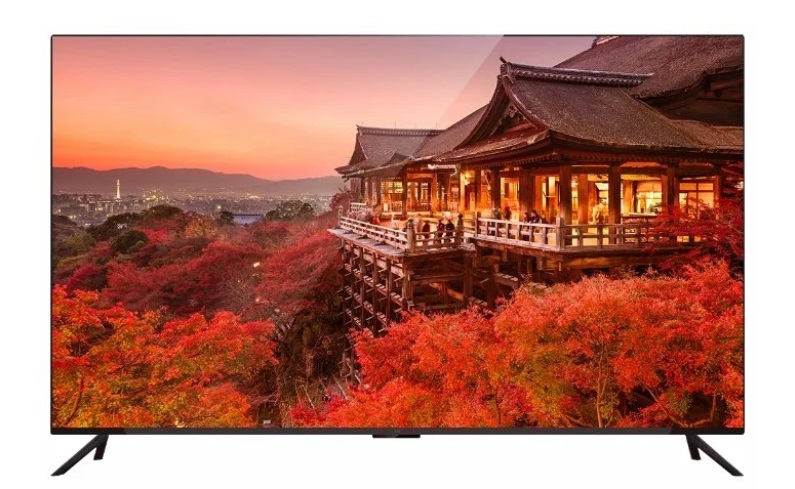
An ultra-thin LCD TV that delivers an incredibly cool picture thanks to the Samsung matrix. The viewing angle is 1780, response time - 8 ms. There is a progressive scan. The speaker system has two surround speakers with a total power of 16 watts. Built-in memory 18 GB. There are outputs: AV, HDMI (3), USB (2), Bluetooth. The device is equipped with brackets for wall mounting.
Advantages:
- with an extended range of brightness HDR10;
- with LED backlight (Edge LED);
- with support for 24p True Cinema;
- there is a sleep timer;
- with protection from children;
- with voice control function;
- with a lot of supported formats.
Disadvantages:
- fragility of the structure;
- high price.
NanoCell LG 55SK-8100
Manufacturer: South Korea
Diagonal: 54.6 diagonal
Screen resolution: 4K UHD, HDR (2160p)
Operating System: webOS
Frame refresh rate: 100 Hz
Dimensions: 123.7x72.1x6.3 cm (excluding stand size)
Average price - 52,000 rubles.

Stylish LCD TV with premium Smart TV. Qualitatively assembled, which is evident from the back of the case, made of metal material. Reactive Smart-TV will turn the operation of the device into one sheer pleasure, and the TFT IPS matrix will allow you to transmit a deep and juicy picture.
The viewing angle is 178 degrees, there is a progressive scan. The speaker system for two speakers with a surround sound effect has a power of 20 watts. Lots of USB and HDMI ports. There is a possibility of mounting the device on the wall.
Advantages:
- a combination of an extended range of brightness and an extended color space (Dolby Vision);
- LED backlight (Edge LED);
- with Local Dimming function;
- with support for NICAM stereo sound;
- there is support for DVB-T2, DVB-S and DVB-S2;
- with teletext;
- with automatic volume leveling;
- there is a Wi-Fi module;
- with picture-in-picture mode;
- with a sleep timer;
- with protection from children;
- universal multi-brand remote control;
- voice control.
Disadvantages:
- unstable stand.
QLED Samsung QE75-Q8CAM
Manufacturer: South Korea
Diagonal: 74.5 inches
Screen resolution: UHD, HDR 4K (2160p)
Operating System: Tizen
Frame refresh rate: 200 Hz
Dimensions: 166.5x104.9x43.3 cm (excluding stand size)
The average price is 300,000 rubles.
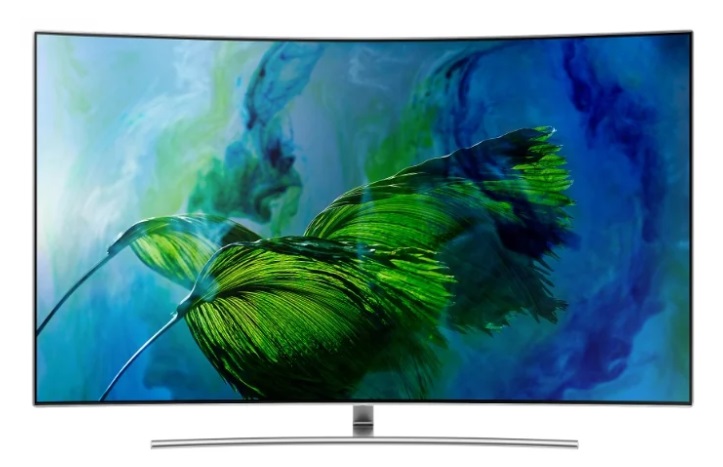
High power TV type QLED 2017 release from the largest manufacturer. The popularity of Samsung models is due to the half-century successful activity of this multinational corporation.
The 4-speaker speaker system with subwoofer and surround sound has a power of 60 watts. Video recording is carried out to an external USB drive. 4 HDMI inputs, 3 USB inputs, Bluetooth, Miracast, WiDi are available. The device can be installed on a stand or mounted on a wall.
Advantages:
- unusual frameless design;
- upscaled to 4K Ultra HD;
- curved screen;
- with support for DVB-T2;
- with expanded dynamic range;
- with teletext;
- with Wi-Fi module;
- with support for 24p True Cinema;
- with voice control function and via smartphone;
- with light sensor;
- there is TimeShift;
- anti-glare screen coating;
- digital noise reduction;
- built-in clock;
- Sleep timer.
Disadvantages:
- high price.
Tips: how to connect Smart-TV

Smart TV connection may differ slightly on different models - it all depends on the settings set by the manufacturer.
The first thing to do is to take the device out of the box, install it on the stand, connect the cords in accordance with the instructions and press the "Power" button. A welcome window will open and you will be prompted to select a language. This can be easily done using the remote control or the buttons located on the side panel.
Almost all models supplied to the Russian market contain Russian, but there are exceptions, in which case you will have to resort to universal English.
Next, you will need to indicate your country, which is needed to determine the time zone. In some models, the time zone will have to be entered manually, and this will later allow the device to automatically set the time.
The next step is best to connect the device to the Network, since the Smart-TV platform cannot function without Internet access. The connection can be wired (using a cable) or wireless (via a Wi-Fi module). In the second case, you need to select the item "wireless connection" from the proposed list, find your network and enter the password.
Then you can start searching for the necessary TV channels. For this, you should first decide on the search mode. For example, terrestrial TV, cable or satellite. After clicking on the corresponding mark, automatic tuning of the available channels will start.It will take some time for the technician to scan. At this stage, you can immediately set "parental control" on some channels.
At the final stage, the device may offer to read the user agreement and confirm its reading.
And that's all. Then you can go to the personal settings of the technique, which already depend on the personal preferences and requirements of the user.
If you have experience of using TVs with Smart TVs described in the rating, or a more interesting model, tell us about it in the comments.












